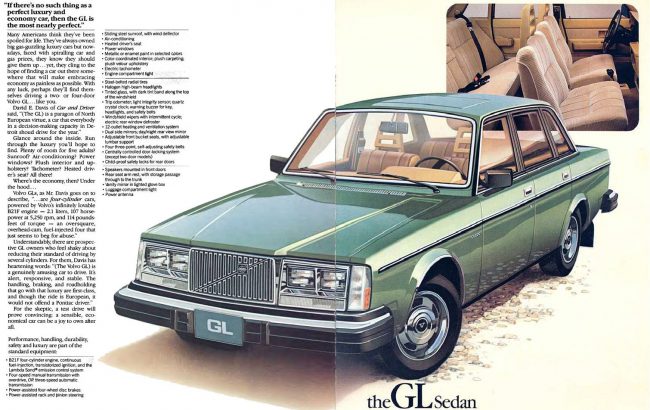
1981 GL
Finally Volvo decided that they would combine the engine of the 240 and premium features of the 264 to create a new model, the GL. Introduced in 1980, the GL’s exterior was the same as the 264GLE, complete with the extra chrome trim, chrome grille and exterior paint choices. Inside, velour replaced the DL’s cloth, and there was additional color coordination of the door panels, hardware and carpet.

1980 GL
Air conditioning was standard, as well as a manual-crank sunroof. Bright trim rings and hubcaps were substituted for the 264GLE’s turbine-spoke alloy wheels. You could even get a 40-channel CB with your AM/FM stereo. Hey, the 70’s had just ended, give Volvo a break!
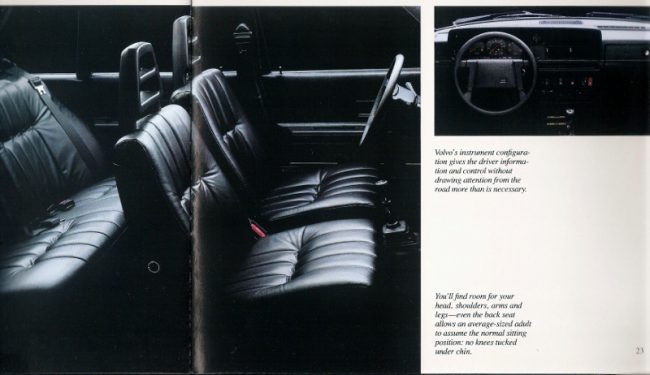
As with the DL, the 240GL had a 2.1L inline four cylinder engine that produced 107 hp at 5,250 rpm and 114 lb ft of torque. In a road test of the GL, David E. Davis of Car and Driver had much to say:
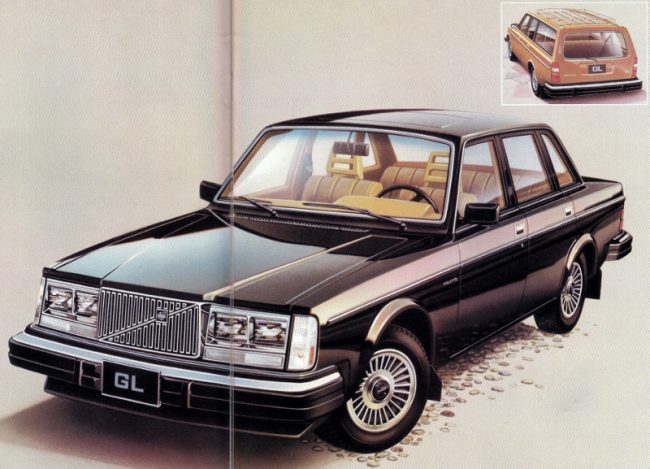
“(The Volvo GL) is a genuinely amusing car to drive. It’s alert, responsive, and stable. The handling, braking and roadholding that go with that luxury are first-class, and although the ride is European, it would not offend a Pontiac driver. (The 2.1L four) is an infinitely lovable engine…that just seems to beg for abuse”
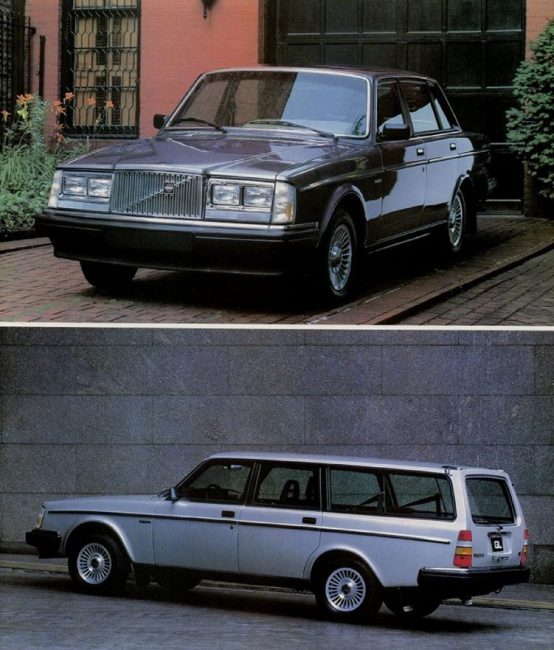
In 1982, a GL station wagon was added, and the GLE’s turbine spoke alloys (a favorite of your author’s) were made standard. A six cylinder diesel had become available in 1981 as a standalone model, but for 1982 it was optional on DLs and GLs. Available in both sedan and wagon form, it featured a 2.4L inline six that produced 78hp at 4800 rpm. The 264GLE, simply called ‘GLE’ by ’81, was in its final year, replaced in 1983 by the new, even boxier (if you can believe it) 760GLE.

Starting in 1983, the 240GL was the finest 240 you could get. When I was born, my dad had a ’79 Bonneville (oft discussed in my posts here on Riverside Green!), but in 1981, he got rid of it and ordered a new DL two-door in maroon with tan cloth.
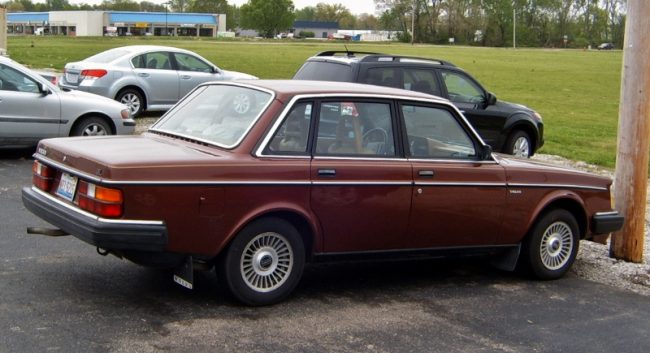
My brother was born in late 1983, and at about the same time I remember Mom telling me that Dad was ordering a new car. The car was a metallic silver over tan leather 1984 GL sedan.
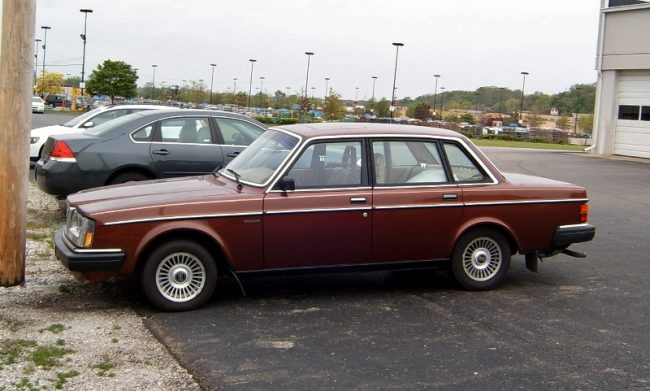
My mom still had her dark blue ’77 245DL station wagon, but Dad’s new car was much fancier. The leather interior was really nice, and it had power windows instead of windup windows, which I thought a big deal at the time.
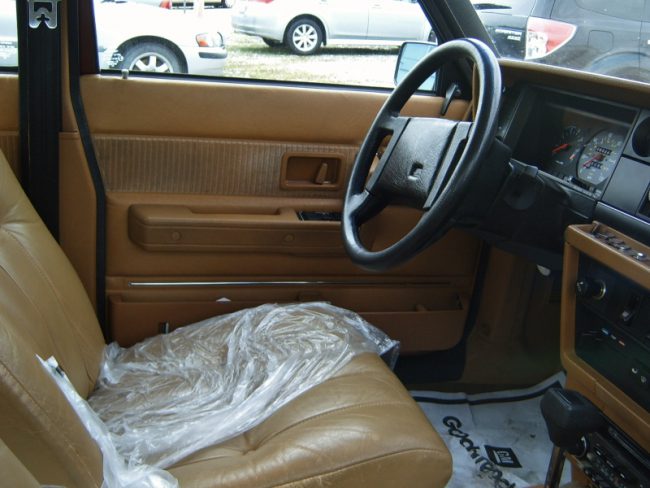
The manual sunroof was also a lot of fun. I remember playing with it a lot in the driveway. You pushed a button built in to the chrome handle, which unlocked it, then you just spun it until it was open. Simple, and no electric motor to wear down and break.
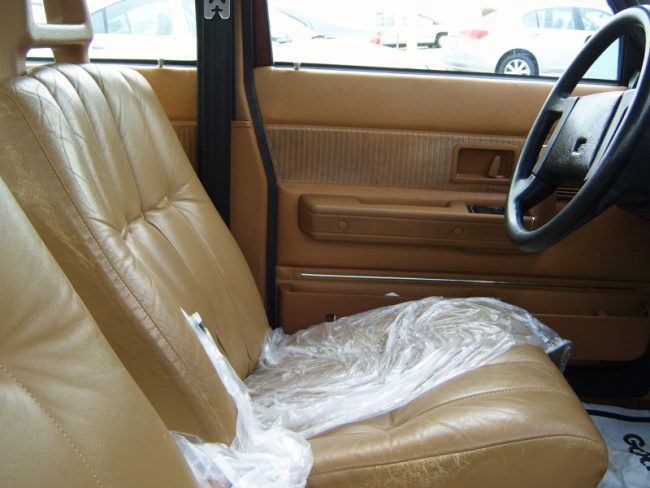
I believe it also had a tilt open feature – from the closed position, you pressed the button and spun the lever the opposite direction.
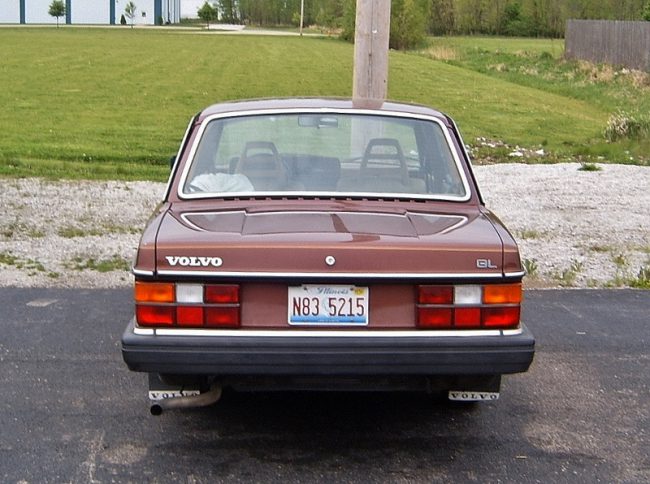
The Volvo 240 was arguably one of the world’s most practical cars at the time. They were very space efficient, with ample head and leg room for passengers. The trunk was a perfect box shape (like the rest of the car) with 13.9 cubic feet of space.

The wagons were even more practical, with 41.1 cubic feet of space in the cargo area – and that was with the rear seat up. Need more room? No problem, just load up those trunks or traveling shells onto the available roof rack.
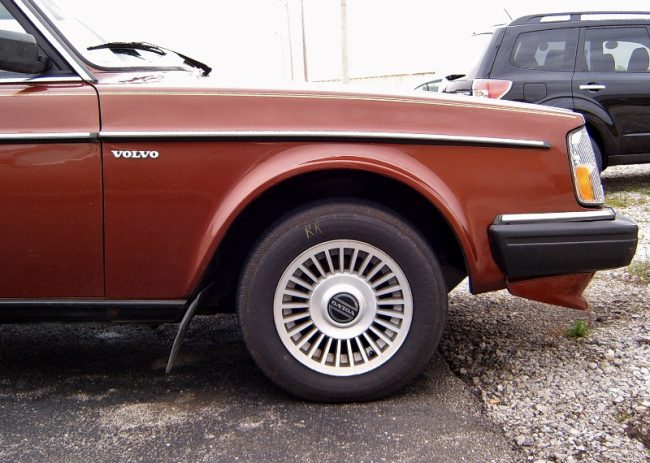
Volvos reputation was built on these cars. Not only were they practical, they were assembled and finished to extremely high standards.
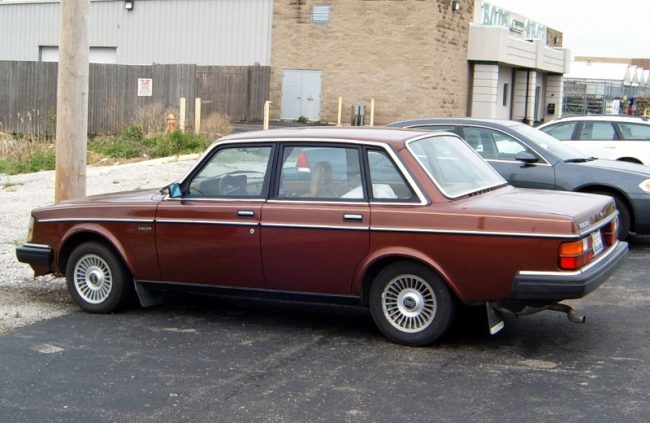
Instead of electrogalvinizing, used by many manufacturers at the time, Volvo used a hot bath process to galvinize every square inch of the bodyshell. It produced a protective layer of zinc that was three times thicker than possible by using electrogalvinizing.
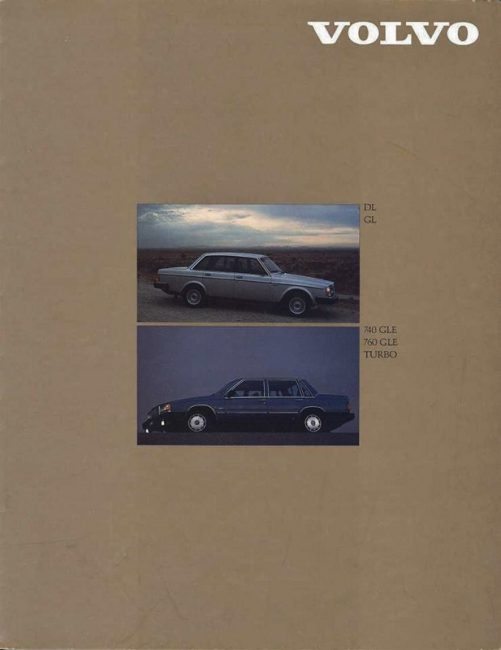
Front fenders were made of Zinchrometal and used plastic liners in the wheel wells to boot. Door latches had built in drains, all exterior trim was made of stainless steel, and the exhaust system was aluminized. These cars were built to last, and Volvo wasn’t shy about advertising the fact. Their brochures in the ’80s spelled out all of these features, and more.
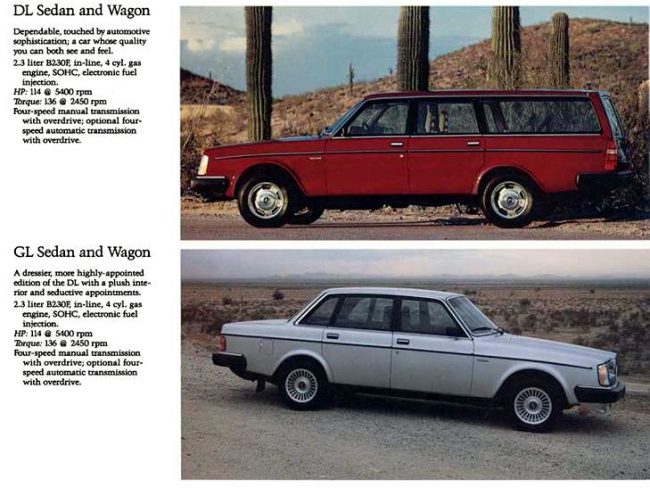
And how could I not mention Volvo’s safety cage design? Hollow steel A, B and C pillars were encircled on the tops and bottoms by yet more steel reinforcement, and tough tubular steel bars were built into all doors for side crash protection.
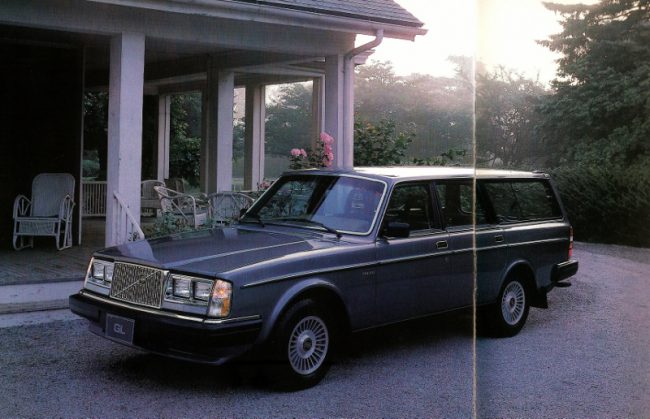
Volvo was probably one of the few manufacturers that featured wrecked 240s in their advertising – they were justifiably proud of all the safety built into their vehicles. In crash testing the 240, what you would see was the car totally deformed up to the windshield, with the rest of the car undamaged. The doors would open and close as normal, and oftentimes the windshield would not even be cracked.
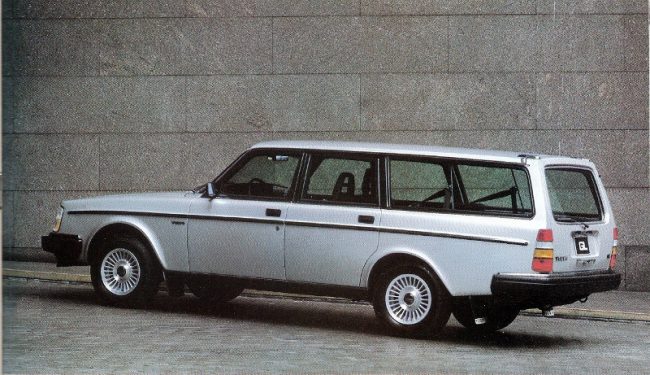
Even in 2019, sixteen years since the last 240 was built, I see them here in town once in a while. But not too many are of the pre-1986 variety, and even fewer are the flossy GL model. I was checking out my local Volvo dealer, McLaughlin Motors, one Sunday back in April of 2012, and did a double take when I spotted this remarkably nice GL sedan around back. It was just like Dad’s except for the metallic brown/burgundy color. It was clearly in for service, as there was protective plastic on the front seat. I had never seen it around town before. But it was clear that it was well cared for, and definitely garaged. And I haven’t seen it since either.
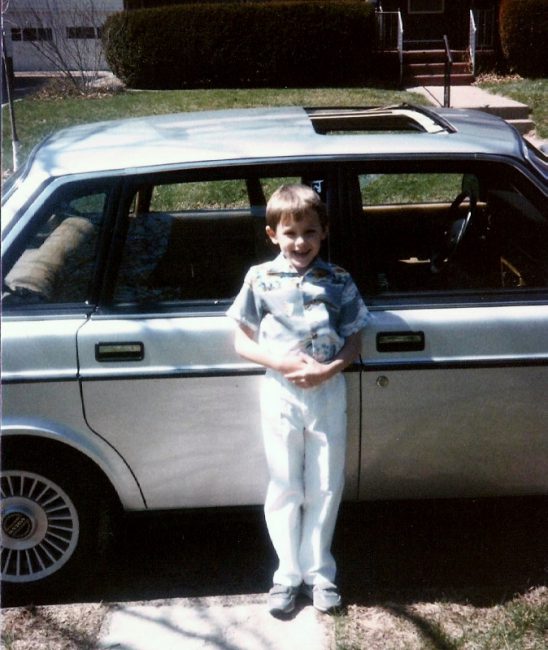
Me and Dad’s GL, spring/summer 1986.
As for Dad’s GL, I have many memories of driving down to the marina with him in the summer, windows down, sunroof open, to go putter around on the boat. It was a cool car, but by 1988 he was ready for a new one, and it was traded in on a fire engine red 1988 740 Turbo Sedan. My Aunt Bobbie and Uncle Ron actually drove in from Champaign and bought the GL from Lundahl Motors, and they had it well into the mid 1990s. Although remote, it could still be patrolling that college town to this day. At least, I’d like to think so.

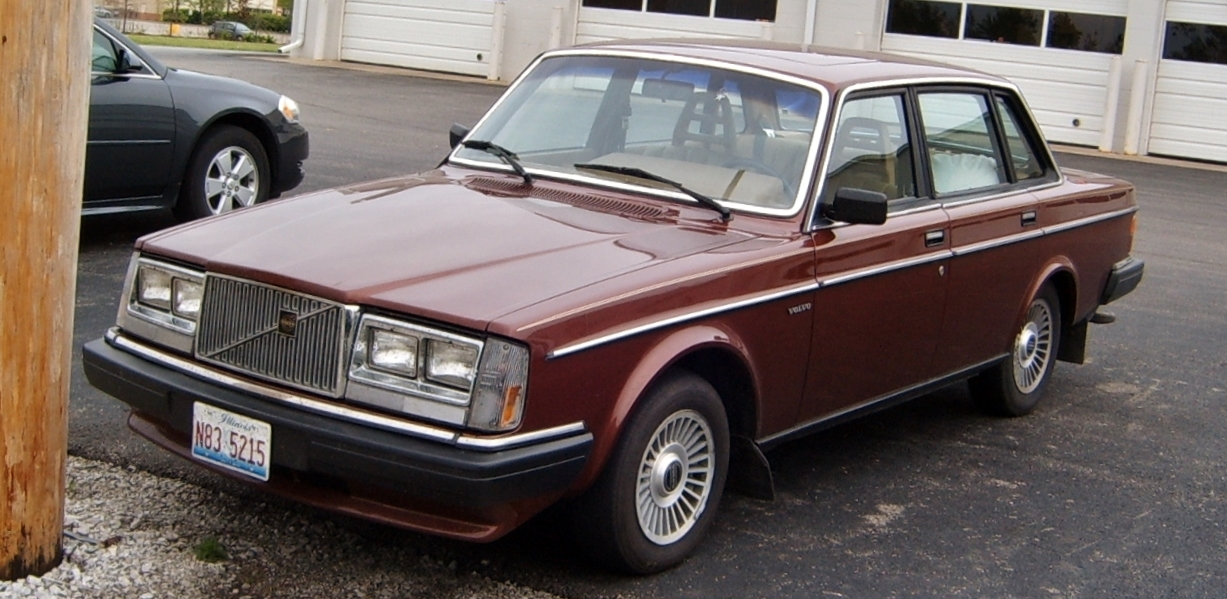
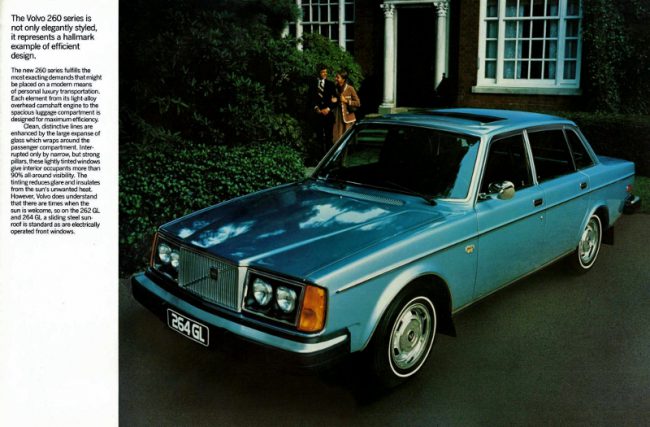
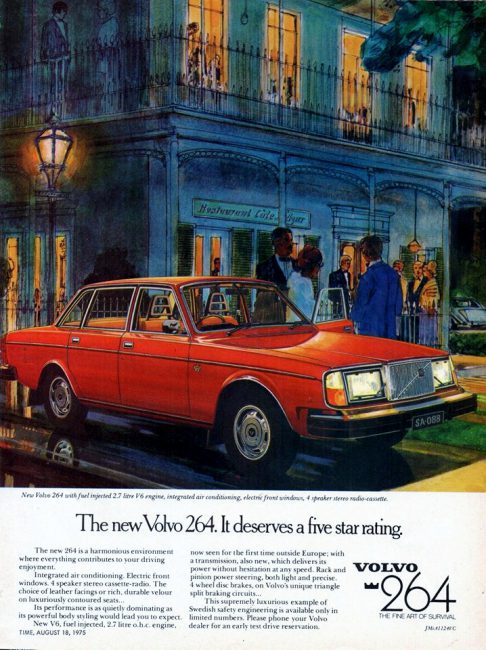






10 Comments
With the 240, Volvo showed how a company could sensibly update an upscale car on a shoestring over a long period. I wish other makers of similar cars, like Studebaker, had managed a similar feat.
The big mistake for Volvo was buying in to that V6. In doing so they let their own inline six drop away, an engine this car desperately needs. The four at the time pulled off a successful overhead cam conversion, imagine how great the six would have been. I assume DED’s comment of the engine begs to be abused is a generously polite way of saying it needs to be floored all the time. Does this car look like it should have to be floored all the time?
John, Volvo did introduce their “white block” 2.9L(?) I6 in the later mid 90s “V90” cars, very smooth but not particularly powerful or efficient mill. In the 80s, I think they were well served by turbocharging, gave them a bit of quirk and cachet, and the cars were legitimately quick for the era. And I agree, that PRV V6 was kind of a bust.
I had that 2.9 in my wife’s 98 V90. The last years of the rear drive application it was detuned to try to get more power at lower rpm, which never seems to do as much as hoped for drivability. It was designed for Volvo by the then Porsche consultancy and was a modular design related to the 4s and 5s in front drive Volvos of the day. I wonder if it was related to the transverse fours Porsche also did for SEAT and Lada, though I assume those two would have stayed with iron engine blocks.
In the early-mid 90s when all of the ex-Soviet “brain drain” emigres were coming over to Ithaca NY to work as physicists and mathematicians at Cornell, all of our families quickly acquired our first cars: older used cars, typically bought for $750-1500 dollars. Most went the Japanese route and ended up with something fairly rusty but reasonably reliable and fuel efficient. One family though got their hands on a black ’84 240 GL with the quad headlights, “turbine” alloys, and a very cracked mustard colored leather interior like in the photos. This was pre-heavy galvanization, so it was basically as rusty as its Japanese counterparts. I remember taking one of our early road trip tent camping vacations, to Martha’s Vineyard of all places, my family in our Civic wagon, our friends in their Volvo. Not exactly what you think of when someone says “Martha’s Vinyeard” eh?
Cornell was pretty good grabbing talent that comes up. My German born and raised mother participated in a German reintegration program at Cornell soon after WWII. Being a college age girl she studied home economics. I asked her if Germany might have been better sending engineering students rather than a girl studying home economics. She said if Germany sent engineers, they would be teaching not learning.
Ithaca ended up with a whole little community of ex-pat Physicists/Math folks specifically from the Novosibirsk State University, but also folks from Moscow, Kiev, etc. My generation spread out from there, everyone went to college and onto white collar jobs (less so academia), a lot in coastal cities in tech, married American gals. My brother and I are the odd balls in that we moved inland and want nothing to do with the big-city progressive crowd.
My mother just went back to Germany after her studies. She later met and married a British man while studying in London and they immigrated together to Canada, where I was born. There just were not many German guys her age. When my older brother attended Cornell in the late 70s the professor’s family that hosted her still lived just off campus.
my brother was an architecture student at cornell. he complained that the european style curriculum required that all his drawings were to be submitted in ink – no pencil drafting allowed! it drove him crazy at the time but he says he learned to appreciate it. to this day, he sometimes attends a sales meeting and a client will discuss an idea that wasn’t in any of the drawings prepared for the meeting. my brother will take out his fountain pen and sketch it on the spot. he said he believes he sealed more than one deal with that trick!
thanks tom for this great write up on what was by far the best car my parents ever owned (although my father probably would have voted for his henry j). they bought a new ’83 244 gl sedan to celebrate having made their last tuition payment on their youngest child’s education. ours was an automatic with the push button overdrive and black leather seats.
a few data points:
the handling was great but it was under powered by american standards. you really noticed it on hills especially, if the car was loaded. i think my mother developed her lead foot from driving it. i have fond memories of a car full of friends hooning it because we were late to a frank zappa concert.
they beat the crap out of the poor thing. nj salted roads, never garaged, smoking, dogs. they were good about oil changes and that’s pretty much all it needed. their were a couple of gremlins with the fuel injection/ignition wiring but nothing serious. was in great working shape when i sold it for them. some rust from clogged door drains and paint damage from the mulberry tree it was parked under for ten plus years. i wouldn’t be shocked if it’s still out there somewhere.
we were all amused by the hand crank sunroof. i think it did have a tilt function. i laughed when i boughtt an ’83 mb 240d years late. it had manual windows with an electric sunroof. oh, the teutonic frugality!
it was the first car i saw with a pass through for skis. it worked great.
i was delegated to handle the audio install. i chose the excellent concord hpl 101 am/fm cassette. the best feature was the front loading cassette through the tuning face plate as seen here: https://youtu.be/sfxGXF6Md1s?t=102 you could easily extract any cassette that got eaten usually with minimal damage to the tape. it also had a very helpful for fm stereo/mono button which is impossible to find on a modern unit. i don’t know if it was volvo or aftermarket but we had a matte black spiral antenna on the a pillar. never understood why it was spiral but it looked cool.
From “Car” Magazine’s famous ‘The Good, the Bad, and the Ugly’ section of the 70s:
Volvo 240
For: Built like a tank
Against: Rides like a tank
Sum Up: It is a tank!